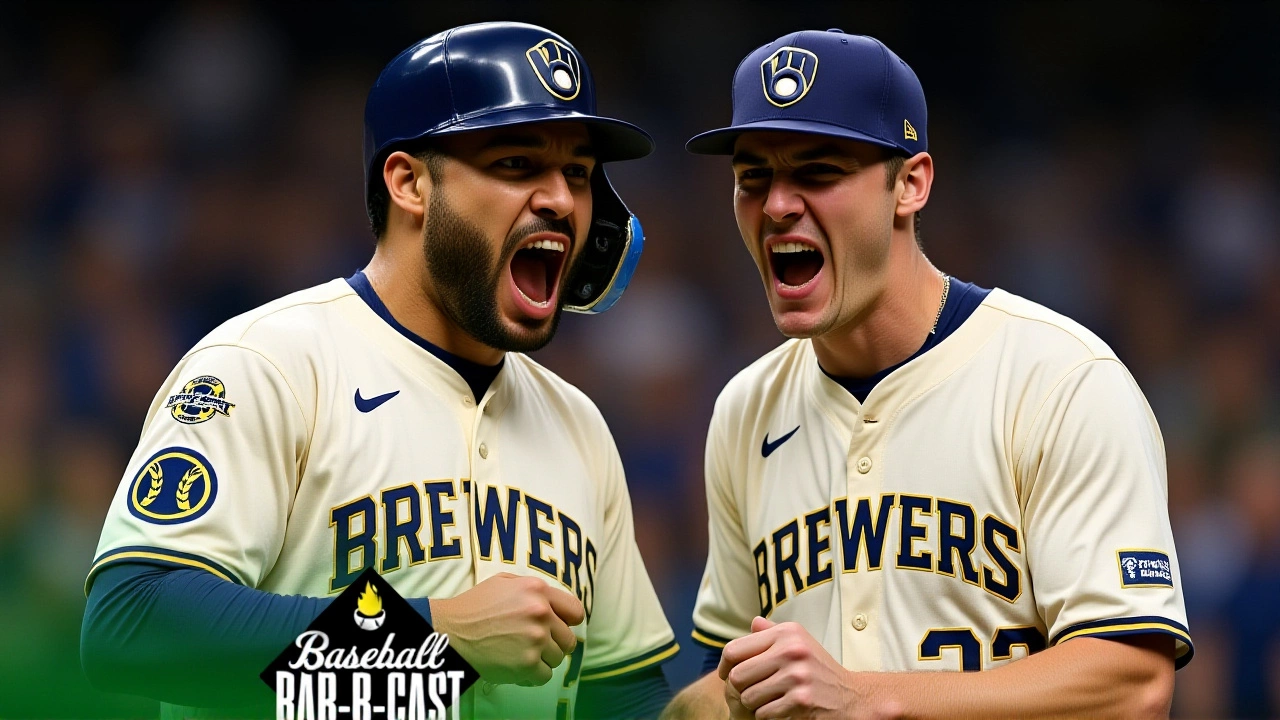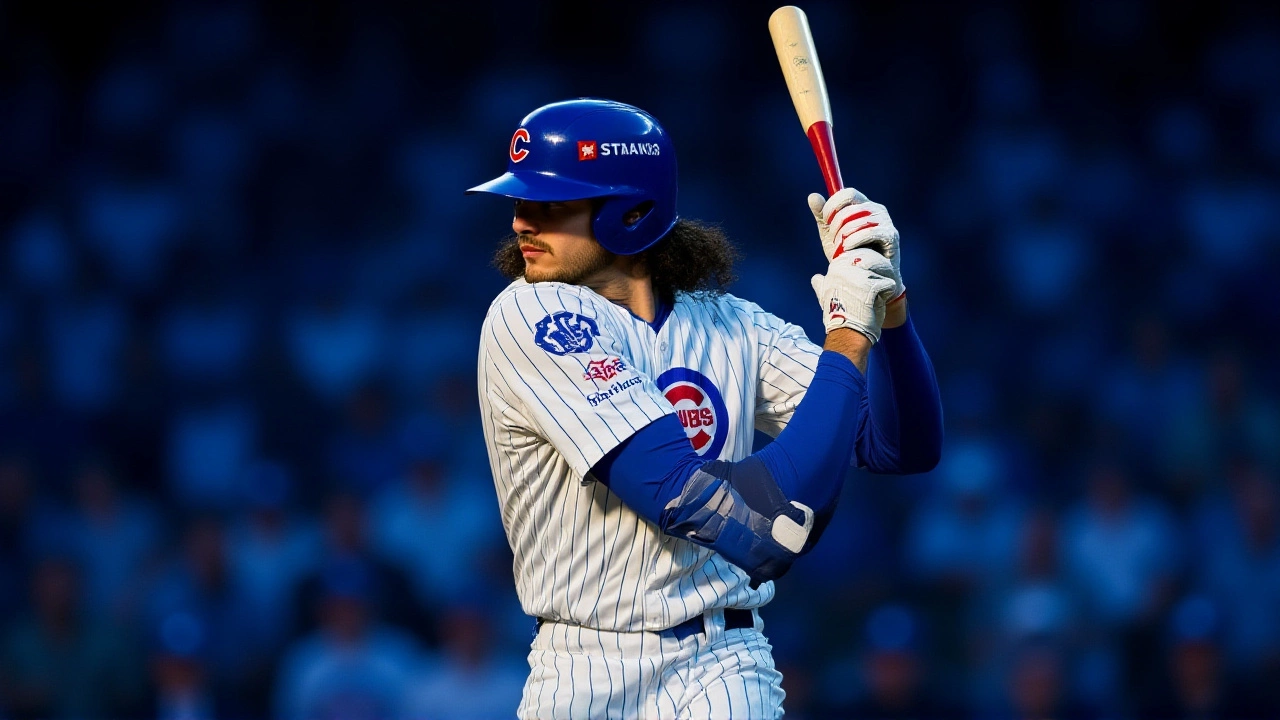
When Milwaukee Brewers stormed to a 6‑2 victory over the Chicago Cubs at American Family Field on October 6, 2025, the National League Division Series (NLDS) shifted firmly in their favor. Pat Murphy, the Brewers’ manager, deployed a classic bullpen game, sending Aaron Ashby to open the night. Meanwhile, the Cubs sat Michael Bush on the bench, swapping him for veteran Justin Turner. In the ninth inning, closer Aribe struck out the side, sealing the win and leaving Chicago staring at a 0‑2 hole as the series moves to Wrigley Field.
Game 2 Recap: Brewers Dominate from Pitcher to Plate
From the first pitch, Milwaukee’s pitchers were in control. Ashby, who rarely works past the third inning, was limited to three solid frames, surrendering just one hit and a single run. The real story unfolded in the middle innings when the Brewers’ bullpen—anchored by left‑hander Mitch Keller and right‑hander Andrew McGuire—shut down the Cubs for 14 consecutive outs. By the time Aribe took the mound, Milwaukee had already retired 15 straight Cubs hitters, a stretch that sparked chants of “Milwaukee Magic” from the sell‑out crowd.
Offensively, the Cubs scraped together two runs, both coming on a solo homer by Ian Happ and an RBI single by Matt Mervis. Even with Turner’s surprise spot start, Chicago could not generate momentum, finishing the night 2‑6, 15‑out of 18 total batters faced.
Bullpen Strategy and Ashby’s Role
Murphy’s decision to turn Game 2 into a bullpen showcase wasn’t made on a whim. After a grueling 12‑inning wild‑card win over the San Diego Padres, the Brewers gave their rotation a day’s rest, opting to stretch the arms of relievers who had already proved they could handle high‑leverage situations. Ashby, a right‑hander who spent most of 2025 bouncing between the rotation and the bullpen, was tasked with eating up the early innings and preserving the late‑game firepower.
“We knew Aaron could give us three quality innings, and we wanted the guys we trust most—Keller, McGuire, and Aribe—to finish the job,” Murphy explained during a post‑game interview on the stadium’s press conference platform. The plan worked: the Brewers’ relievers combined for a minuscule 0.87 ERA over the first two NLDS games, a figure that dwarfs the Cubs’ season‑long bullpen ERA of 3.45.
Cubs’ Lineup Shuffle and Offensive Woes
Chicago’s biggest tweak was benching Michael Bush, who had struggled all season against south‑paw pitching (a .152 average vs. lefties). Justin Turner, at 39, stepped into the leadoff slot—an unusual move that signaled desperation. Turner managed a walk and a strikeout, but his presence didn’t translate into runs. The Cubs also featured a double‑switch that moved right‑handed slugger Javier Baez down to the sixth spot, hoping to protect him from the Brewers’ left‑handed specialists.
Yet the Brewers’ left‑handed, right‑handed platoon was flawless. Neither Baez nor Happ could find a rhythm, and Chicago’s on‑base percentage (OBP) dropped to .215 in Game 2, well below their regular‑season .331 mark. The offensive void underscores a larger trend: the Cubs have recorded just three runs in the first two NLDS games, a stark contrast to their 92‑70 regular‑season tally where they averaged 4.6 runs per game.

Series Outlook: What Chicago Needs
With the series now tied at 2‑0, the Cubs must win three straight, starting with Game 3 at Wrigley Field. To do that, they’ll need to crack the Brewers’ bullpen puzzle and revive a stagnant offense.
- Revamp the lineup: Bring Bush back against left‑handed starters or consider a pinch‑hit specialist for Turner.
- Exploit Milwaukee’s weakness against power: The Brewers gave up four home runs in the five‑game regular‑season series against the Cubs; a similar surge could tip the scales.
- Lean on starting pitching: Cubs ace Kyle Hendricks (who threw a complete game in September) must deliver a deep start in Game 3 to keep the bullpen fresh.
Meanwhile, Murphy will likely stick with his bullpen‑first philosophy, trusting that the same relievers who silenced Chicago will repeat the feat on the road. If the Brewers can keep the Cubs off the scoreboard for the final six innings of Game 3, the series could be over before it even reaches Game 4.
Historical Context: NLDS Rivalry and Recent Trends
The Brewers and Cubs have met three times in the NLDS over the past decade, with each series stretching to the full five games at least once. The 2021 matchup saw Milwaukee win in four thanks to an explosive bullpen, a blueprint Murphy clearly recycled in 2025. Conversely, Chicago’s last NLDS victory came in 2016, when a late‑inning rally overturned a two‑run deficit.
Statistically, the Brewers’ road record this postseason sits at an impressive 4‑0, underscoring their ability to thrive in hostile environments. The Cubs, by contrast, boast a 1‑3 NLDS road record, indicating that the odds are stacked against them as the series heads to Wrigley.
What makes this series unique is the convergence of strategic pitching trends (bullpen games) and the lingering question of whether a veteran‑heavy lineup can out‑hit a deep, versatile staff. Baseball analysts like Emily Jones of ESPN predict a “pitcher's duel” for the remainder of the series, noting that “both clubs are built around strong arms, so the side that can manufacture runs in limited opportunities will have the edge.”
Frequently Asked Questions
How likely is it that the Cubs can force a Game 5 at Wrigley?
Historically, teams down 0‑2 in a best‑of‑five win only about 12% of the time. Chicago’s strong home record (50‑31) improves those odds slightly, but they must win three straight against a Brewers bullpen that has posted a sub‑1.00 ERA in the series so far. The odds are low, but not impossible.
What changes could the Cubs make to jump‑start their offense?
Re‑inserting Michael Bush against left‑handed starters and using a pinch‑hit specialist for Justin Turner are immediate options. Additionally, shifting Javier Baez up in the order could force the Brewers to deploy a right‑handed reliever earlier, potentially creating a mismatch.
Why did Pat Murphy opt for a bullpen game instead of a traditional starter?
After a taxing 12‑inning win in the wild‑card round, the Brewers needed to preserve their rotation. Murphy trusted his depth‑filled bullpen to handle high‑leverage innings, a strategy that paid off with a 0.87 ERA over the first two games.
Which player has the biggest impact on the outcome of the series?
While pitching will dominate, the player most likely to swing the series is Cubs shortstop Ian Happ. He remains the Cubs’ best power bat and could provide the run‑production Chicago desperately needs.
When is the next game scheduled and where can fans watch it?
Game 3 is set for October 8, 2025, at 7:05 p.m. Central Time, broadcast nationally on ESPN and streamed live via the MLB.TV platform.

Write a comment